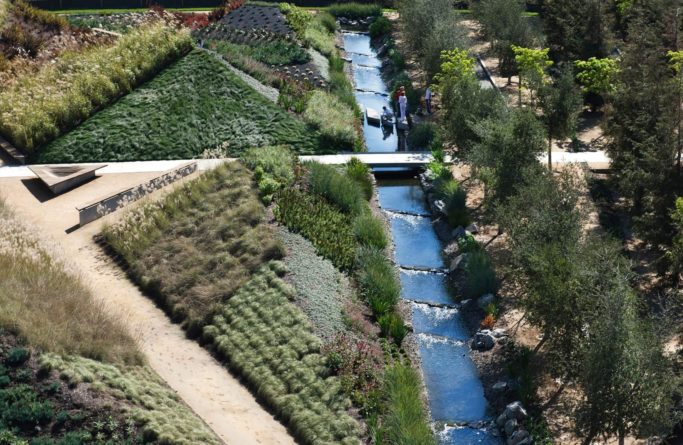In case you didn’t notice, the architecture world is embracing all things green with an enthusiasm not seen since the 1970s. But this time around, the movement has expanded far beyond the grass-roots level to a broader merging of architecture and landscape. This soil-meets-steel trend, precipitated largely by our limited space resources, by the crossover in design fields, and by our desire to return to our roots, has forced architects and landscape architects to collaborate more closely, and occasionally, even to reverse roles.
“The boundary between landscape and architecture barely exists anymore,” said architect Michael Maltzan, who this summer opened the Playa Vista park on LA’s West Side, a composition broken up into a series of “urban rooms,” as the architect calls them, including floating recreation areas, large angular planted mounds, carved granite bridges, and a tensile fabric band shell. Combining valuable techniques learned from landscape architect James Burnett with his own architectural expertise, Maltzan used materials to reinforce the separation of space and employed shapes and textures to lead people through the park. In the end, the park is as much architecture as it is landscape.
“The concerns and investigations are the same,” said Maltzan. “If you remove the traditional distinctions between what disciplines are supposed to be doing and imagine what needs to be done, then you can create real innovation,” he added. Several of Maltzan’s upcoming projects merge architecture and the land, including the Cornfields Park in LA, the Piggyback Yard near the LA River, and the Art Park, next to the Geffen Contemporary in Downtown LA.
And Maltzan’s work is no aberration. Building green and stretching creative boundaries are just two reasons that “earth-itecture” is taking off. As we run out of buildable land, and as our sprawling lifestyle stretches our resources, it seems inevitable that we must learn how to better overlap architecture and green space in smart ways.
Read the original article in The Architect’s Newspaper.
